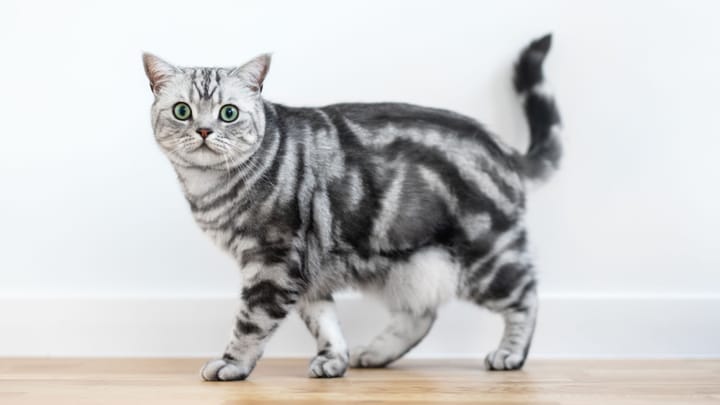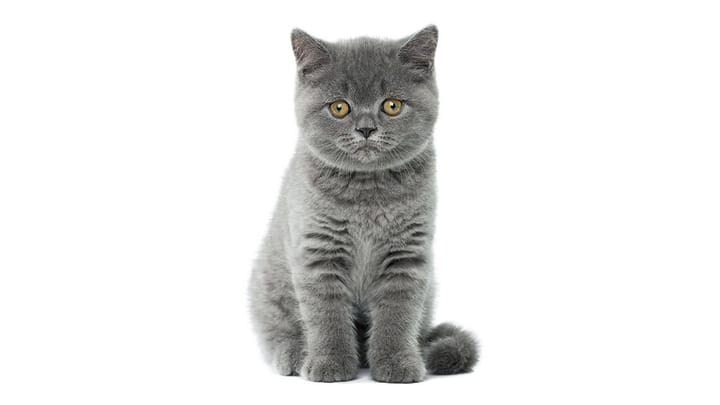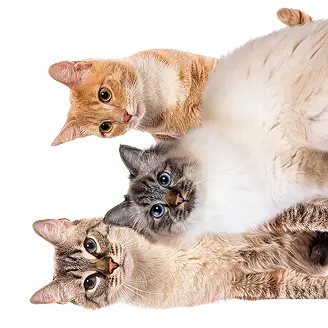British Shorthair


The British Shorthair is the darling of the English: with their round heads and teddy-like appearance, you will fall for their noble charm. When this cat arrived in Britain, its mission was to clear the territory of rats. Their beautiful appearance and blue color often mean they are confused with the Chartreux. The British Shorthair is still very popular with the public. There is a long-haired variety named British Longhair.
|
Life expectancy |
The British Shorthair has a life expectancy of between 14 and 18 years |
|
Temperament |
|
|
Adult size |
Female
Approximately 11 in
Male
Approximately 12 in
|
|
Adult weight |
Female
Between 7 and 9 lb
Male
Between 11 and 18 lb
|
|
Coat colour
Black, white, chocolate, ginger, cinnamon, and all its dilutions blue / lilac / cream, fawn |
Black Brown Red Cream White Blue |
|
Type of coat
The hair is short. |
Short |
|
Eye colour
Blue, aquamarine, green, hazel, golden yellow, dichroic eyes |
Blue
Green
Yellow
Odd-eyed
Brown
|
|
Purchase price |
The British Shorthair costs between £150 and £500 |
The definitive colour of the cat’s eyes will only appear after 2 and a half months and they then slowly develop their adult bodies, notably their thick fur.
More details about the British Shorthair
British Shorthair: Origins and history
Their first exhibition dates from 1871 when they were presented in London at Crystal Palace. They automatically bore the name of British Shorthair in order to differentiate them from certain breeds present at this exhibition who had long hair.
After the Second World War, many breeds began to die out. To bring the British Shorthair back to life, crosses with the Persian allowed their coat to expand and to differentiate more clearly from other breeds such as the Chartreux.
Physical characteristics of the British Shorthair
This beautiful cat has a powerful and majestic body. Its thick, soft hair has a dense texture that helps withstand the cold. The British Shorthair has the look of a teddy bear thanks to their round heads so characteristic and inimitable. They have large, well-spaced eyes that make them recognisable in the blink of an eye. Although crossbreeding with the Persian took place in order to perpetuate this breed, the British Shorthair did not inherit the crushed nose gene.
British Shorthair: Characteristics
British Shorthair: Behaviour
Breed compatibility British Shorthair
British Shorthair: Purchase price
On average, the price of a British Shorthair kitten is between £150 and £500. The price varies for a number of reasons, including the lineage of the kitten, the breeder, age, or even sex. On average it will cost around £30 per month to meet their needs and provide good quality food.
British Shorthair: Shedding
Light
Other than when they are moulting, a weekly brushing will suffice thanks to their short hair.
British Shorthair: Grooming
Regular brushing is advised to get rid of dead hair. During the spring moult, the British Shorthair will lose a significant amount of fur, which is extremely thick. So it is better to get your cat used to regular grooming sessions.
British Shorthair: Health
They tend to live for 14 to 18 years.
Fairly robust in their nature, their thick coats give them good protection against the cold.
Their reputation for being quite a docile cat might also encourage weight gain. It is vital to watch their weight and consult your vet.
The British Shorthair may develop the same illnesses as any other cat, such as oral diseases.
Some diseases are specific to this breed:
- Polycystic kidney disease - a disease resulting in the development of cysts that will prevent the normal functioning of the kidney. As a result, incurable kidney failure will occur. Only veterinary care and a specialised diet can delay the disease and improve the quality of life of the cat.
- Hypertrophic cardiomyopathy results in the thickening of the heart muscle. By deteriorating, this illness causes heart failure that can result in arrhythmias, lung edema or even thrombosis of an artery. Screening is done by means of an echocardiography examination, which is usually renewed annually. A treatment can be administered to improve comfort.
The number of kittens per litter is on average around 4. Puberty occurs around the age of 6 months in females and 7 months for males.
The International Cat Association authorises breeding with the Highland Fold and the Manx. Other cross breeding with the Cymric and the American Wirehair are authorised by the French Feline Federation.
Do you want a British Shorthair cat ?
Frequently asked questions
How much is a British Shorthair kitten?
The price of a British Shorthair kitten varies according to the lineage of the kitten, the breeder, age, or even sex. Their cost is on average between £150 and £500. It will cost approximately £30 per month to meet the cat's needs and provide good quality food.
Are British Shorthair cats lazy?
British shorthair cats are known for quite lazy and not very dynamic but this is mainly because of their heavy physique. However, this cat breed loves to play and needs to keep active to avoid becoming overweight. If you a looking for a chilled and calm cat, the British Shorthair is perfect for that.
How long do British Shorthair live for?
The life expectancy of a British Shorthair is between 14 to 18 years.
Do British Shorthair shed a lot?
In general no the British Shorthair doesn't shed a lot, but when they are moulting, this cat breed will lose a significant amount of hair as it is extremely thick. This feline will need regular brushing and it would probably be a good idea to get him used to grooming sessions as soon as possible.
Here's how to manage cat shedding in Autumn.
Do British shorthairs make good indoor cats?
The British Shorthair is an excellent indoor cat for many reasons: it's a calm, laid back and affectionate cat. This cat breed doesn't have the reputation of being active cats, so they would be more than happy chilling on the sofa.
However, because these cats aren't very active and are prone to obersity, therefore it's really important to keep a British Shorthair active, even indoors, with playtime sessions for example. Here are tips to help you get your cat to exercise indoors.






